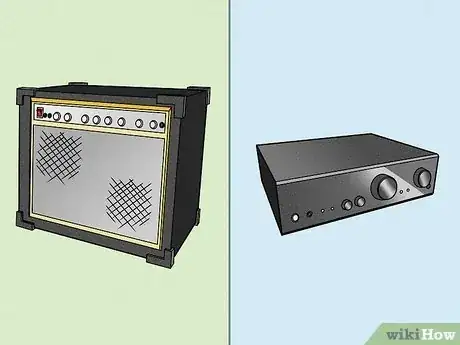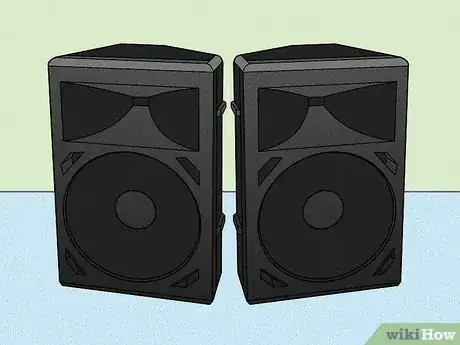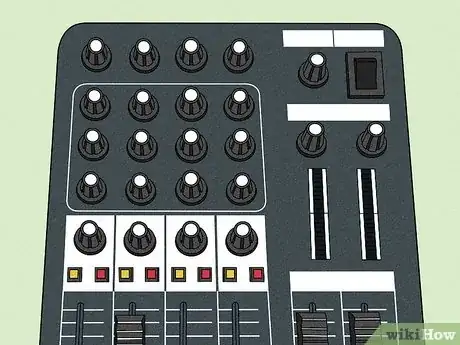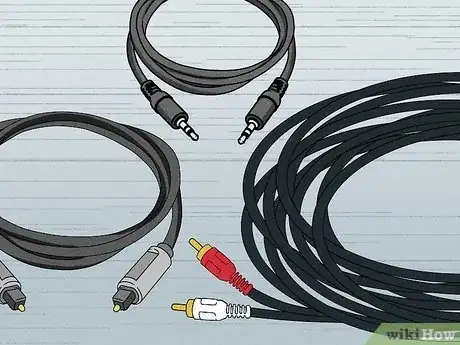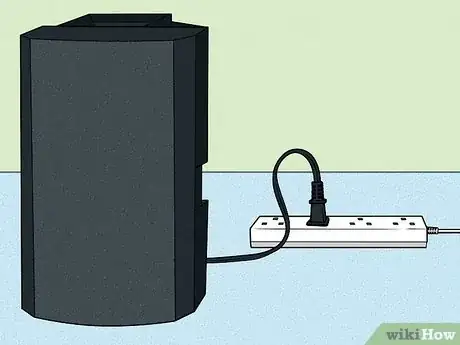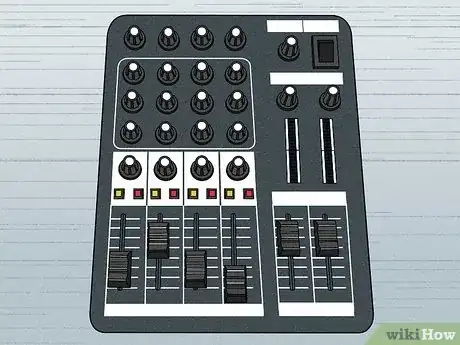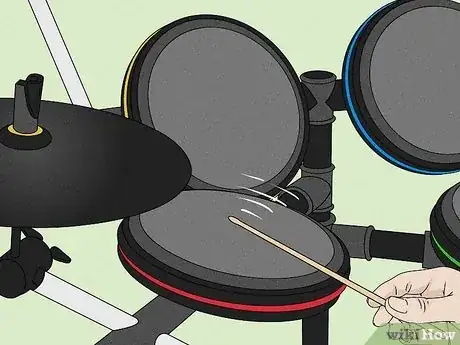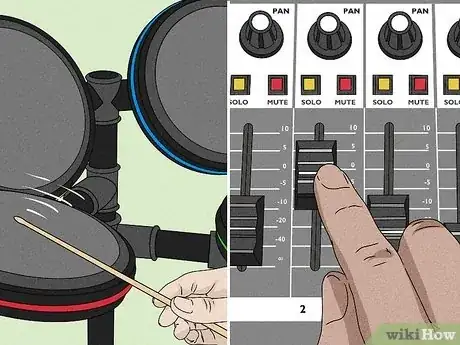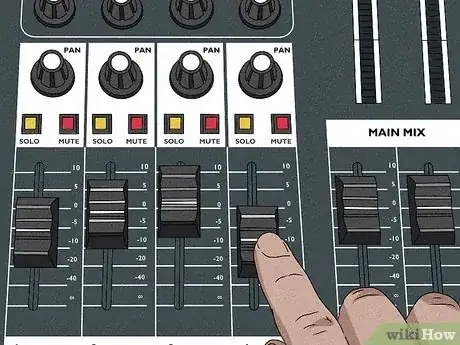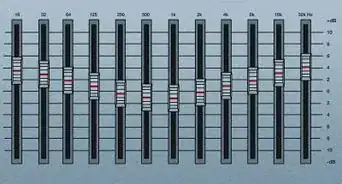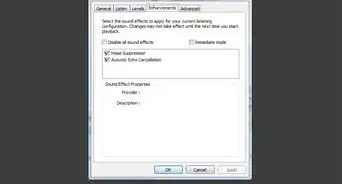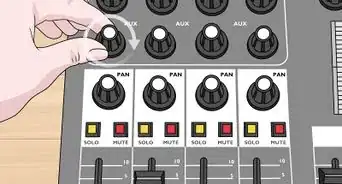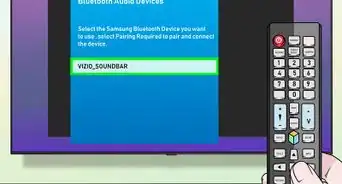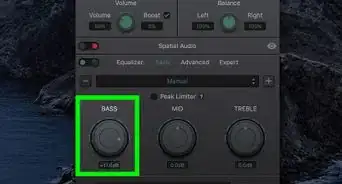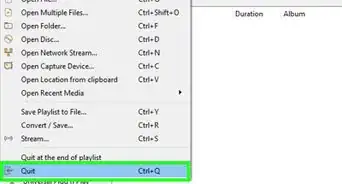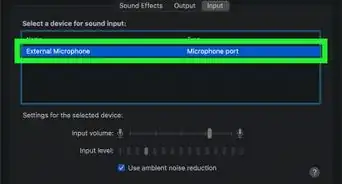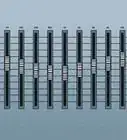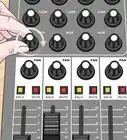This article was co-authored by wikiHow staff writer, Travis Boylls. Travis Boylls is a Technology Writer and Editor for wikiHow. Travis has experience writing technology-related articles, providing software customer service, and in graphic design. He specializes in Windows, macOS, Android, iOS, and Linux platforms. He studied graphic design at Pikes Peak Community College.
There are 8 references cited in this article, which can be found at the bottom of the page.
This article has been viewed 14,170 times.
Learn more...
Whether you are a live musician looking to take your performances to the next level, or a music enthusiast with an addiction to the latest in audio technology, setting up a stage sound system (or a PA system) can be a vital (and fun!) undertaking. Best of all, it's surprisingly simple, even if you are a music novice setting up for a visiting performer. This wikiHow article will teach you everything you need to know about setting up your very own stage sound system.
Steps
Getting What You Need
-
1Get a venue. It may seem obvious, but you will need an actual stage upon which you can set up your stage sound system! Be sure to inspect your venue to see where its electrical outlets are. Before purchasing a PA for a venue, it's important to consider the size of the venue, the number of people it can seat, and the desired volume. A bar that has live rock music will need a much more powerful PA than a coffee shop of the same size that has live folk music.
- Before setting up your PA system, you may want to determine any lighting or decorations you'll need on stage, as these are obstacles you will have to work around during setup.
-
2Purchase microphones and microphone stands. As you might expect, a proper stage sound system needs a good microphone to capture and amplify the onstage sound. A solo folk singer may only need one or two mics. A band will likely need a separate mic for each singer and instrument, as well as several mics for the drums.
- Since microphones can be used for different purposes, it is important that you have a microphone stand for each purpose. You should have a couple of tall microphone stands for singers, and several long-arm microphone stands that can be positioned differently for instruments, drums, acoustic guitars, and guitar amplifiers.
- There are two kinds of microphones: dynamic and condenser microphones. Dynamic microphones are easier to use as they are less sensitive, but condenser microphones can pick up greater nuance in a singer's voice. [1]
- Even if you have an amplified instrument, such as an electric guitar, you may still need to place a microphone in front of your amplifier. Using a line-out from a guitar amplifier to the PA usually doesn't sound as good as putting a microphone in front of the guitar amp. This is especially true if you are using lots of gain and distortion.
Advertisement -
3Purchase an amplifier (if needed). Amplifiers are need to power each speaker and monitor on stage. You may need a separate amplifier for each speaker or pair of speakers. Make sure you purchase amplifiers that have enough power output to suit your needs.
- Power & wattage: When purchasing an amplifier, it is important to check how much power your amplifier is capable of putting out. This is measured in watts. The amount of watts you need depends on the size of the venue as well as the desired volume. If you are playing folk music in a coffee shop, you will generally need between 25 to 250 watts. If you are playing pop or jazz music in a medium-sized venue, you will need between 250 - 750 watts. Rock music in a medium-sized venue will require at least 1500 watts. An arena or outdoor concert will need at least 4000 watts.[2]
-
4Purchase a set of speakers. No sound system is complete without a set of speakers. Of all the aspects of your sound system, investing in a strong set of speakers can make a world of difference.
- Passive & Active Speakers: Active (or powered) speakers have their own amplifier built-in. They do not need an external amplifier. However, passive speakers need an external amplifier or a powered mixer.
- Speaker power handling: When purchasing passive speakers, it is important to make sure you get speakers that match the power output of your amplifiers. If your amplifier pushes more wattage than your speakers can handle, you can damage your speakers. You'll need to check the speaker's root mean square (RMS) value as well as the speaker's peak value. The RMS value refers to how much continual power a speaker can handle. The peak value refers to how much power a speaker can handle in short bursts. Be careful that you get the right speaker for your amplifier. A speaker that is advertised as 500 watts may be referring to the peak value rather than the RMS value.
- In addition to speakers, you may need a subwoofer for your sound system. Subwoofers increase your audio's bass, so they are helpful for rock or hip-hop shows, but likely not necessary for country or jazz. A subwoofer requires a more powerful amplifier than regular speakers.
-
5Purchase stage monitors. Stage monitors are smaller speakers that allow the performer(s) to be able to hear themselves. A venue with a small stage with a single performer may not need monitors, but they are a must for larger stages that bands play on. The monitors allow the musicians to hear the parts they need to hear and be able to play in time with each other.
-
6Purchase an audio mixer. An audio mixer is a console where everything comes together. They have multiple inputs for each microphone and instrument, volume controls for each of the microphones and instruments, as well as an output for each of the speakers and monitors. Make sure you get a mixer that has enough inputs for each of your microphones and instruments, as well as an output for each of your speakers and monitors.
- There are two kinds of mixing consoles: analog and digital mixers. Analog mixers offer greater EQ customization, while digital mixers are ideal for touring bands, as they are smaller and can be controlled remotely via your smartphone.
- Powered mixers: Some mixers have a built-in amplifier. These are called powered mixers. These can eliminate the need for an external amplifier. If you are purchasing a powered speaker, make sure the power output matches the wattage you need and how much wattage your speakers can handle.
- In addition to volume control, many audio mixers have their own gain control and equalizer for each channel. This allows you to adjust the tone and pitch of each channel input.
-
7Audio cables and gaffer tape. You will need lots of audio cables when setting up a PA system. Gaffer tape can be used to secure any loose cables. There are different types of audio cables you can use. They are as follows:[3]
- XLR cables: XLR cables are most commonly used to connect microphones, amps and powered speakers. They are highly reliable and can carry audio signals over a long length. They have a male connector with three pins and a female end with three holes. They also have a locking mechanism that prevents them from being disconnected during a performance.
- 1/4 inch instrument cables: These cables have a pin on both ends that is 1/4 inch thick. If the pin has 1 black band, it can only carry a mono audio signal. If it has two bands, it can carry a stereo signal. They are most commonly used to connect instruments to amplifiers or a PA system.
- RCA cables: RCA cables usually have two audio cables for the left and right audio channels. One cable usually has a white pin connector, and the other has a red pin connector. You can connect these to the color-coded audio RCA inputs on the mixer board.
- 3mm cable: This is the cable that is most commonly used to connect headphones to a mobile phone or laptop computer. They have a pin that is 3mm thick on both ends. You can use these to connect a laptop or mobile phone to a PA system. If the PA doesn't have a 3mm input, you can use a 3mm-to-1/4 inch adapter to connect them to a PA.
Setting Up The Sound System
-
1Determine speaker placement. Before you get too far into setting up your sound system, you'll want to survey your space and determine the optimal location for your speakers. While you should have at least two front-facing speakers (one on each side), you'll want to take into account a variety of factors:
- The size of the stage
- The acoustics of the room
- The location of the electrical outlets
- Where the audience will be in relation to the stage
- Where each performer will be onstage [4]
-
2Place your speakers and subwoofers. Speakers and subwoofers should be placed at the front of the stage, facing the audience with the microphones behind the speakers to avoid feedback. Both the right and left speakers should have a significant distance between them to create enough sound separation between the right and left channels.
- Sound travels further when a speaker is elevated. Elevate your speakers by placing them on stands. You may need multiple people to help properly mount a speaker in this case.
- Be sure to tighten the screws at the back of the speaker to ensure the speaker stays in place!
-
3Position your monitors. Remember to place them near where each performer will be playing, pointed upwards towards them.
- You should have at least two monitors, one for each side of the stage. Drummers may need a third monitor placed towards the back. This monitor should be placed next to the drummer and carefully aimed towards the drummer and away from any microphones.
-
4Plug in all powered components. Any amplifiers, mixers, and active speakers you have will need to be connected to a power outlet. Make sure they are placed near an A/C power outlet or that you have enough extension cords to be able to connect them to an A/C power outlet.
- Gaffer tape may come in handy here to secure any loose or bulky wires.
- When plugging your system in to a power source, be sure to keep the power off until you are ready to connect everything to your sound mixer.
-
5Set up your mixing console. Analog mixers can be placed anywhere in the venue. Setting them up away from the stage may make for a cleaner setup, but keep in mind it will require longer audio cables and/or extension cords as well.
- Mixers are most commonly set up behind where the audience will be sitting, ensuring the technician's perspective is similar to that of the audience.
- A wireless digital mixer can be set up inconspicuously onstage and can be controlled remotely via a tablet or smartphone.
-
6Connect your speakers to the mixer. The speakers will usually be permanently connected to the mixer. Run a cable from the mixer's left output to your left-hand speaker. Repeat this process with the mixer's right output and the right-hand speaker, as well as for any other speakers you may have.
- If you are using passive speakers, you will need to connect speakers to an amplifier before connecting them to the mixer. Use an XLR or 1/4 inch cable to connect to the output on your mixer to the input on an amplifier. Then use another cable to connect from the output on an amplifier to the input on the speaker.
- If using a subwoofer, be sure to run the cable from the mixer through the subwoofer's "Pass Thru" connection on its way to the speaker.
-
7Connect your monitors to the mixer. Daisy-chain each monitor, alternating between the "INPUT" and "THRU" ports on each monitor, before plugging the cable into the mixer's "Monitor Out" or "Monitor Send" port. [5]
- Be sure to collaborate with your performers in setting up the monitor's. Because it is their sole reference for how they sound, their satisfaction with its setup is paramount.
-
8Connect all audio sources to the mixer. This is usually done prior to a show. All instruments will need to be connected to the mixer. Keyboards and electric drums can be connected using the built-in 1/4 inch output. Guitar and bass amps will likely need to have a microphone placed in front of them. Singers, acoustic guitars, and drums will need their own microphone(s)
- To avoid clutter, consider using a multi-channel snake, which allows you to connect all of your audio sources to a single box, decreasing the overall number of wires. [6]
- Microphones and drums: Drums usually require several microphones. Place a dynamic mic in front of the sound hole on the kick drum. Then place a regular mic over the rim of the snare angled towards the middle and facing away from the high hat. Do the same for each of the toms. If you don't have enough mics to mic each tom, you can place a mic in between each pair of toms above the rims. Place another mic above the edge of the high hat facing the middle. Then place two microphones above the symbols on the left-center, and right-center of the drum kit. If you are not sure what kind of mics to use, you can purchase a microphone kit for drums.[7]
-
9Turn on the speakers, then the monitors, then the mixer. Once everything is connected, power on each part of the sound system one area at a time. Start with the speakers, then the monitors, and finally the mixer.
- Keep all volume settings in the low-to-mid ranges at this point. You can raise them later as you test your sound.
-
10Play each track on one of your mixer's channels. Have each instrument and singer play individually. Slowly adjust the volume for each instrument.
-
11Perform basic EQ on all instruments. Have each performer play one at a time. Adjust the volume and EQ for each player individually.
- If you experience a lot of feedback, you may need to reposition your speakers or monitors. [8] An automatic feedback destroyer may also prove handy.
-
12Adjust all the instruments together. Once you have made adjustments to each individual instrument and microphone track, have all the performers play together. Make adjustments to the overall volume and EQ. Once everyone sounds good playing together, the show can begin.
References
- ↑ https://virtuosocentral.com/best-vocal-mic-for-live-performance/
- ↑ https://www.crownaudio.com/how-much-amplifier-power
- ↑ https://usa.yamaha.com/products/contents/proaudio/musicianspa/equipments/cable.html
- ↑ https://virtuosocentral.com/how-to-position-pa-speakers/
- ↑ https://virtuosocentral.com/how-to-set-up-stage-monitors/
- ↑ https://ehomerecordingstudio.com/studio-cable-snake/
- ↑ https://www.youtube.com/watch?v=3lJvNNBwdvo
- ↑ https://virtuosocentral.com/what-causes-microphone-feedback/


